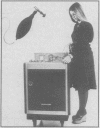Abstract
The mixed venous carbon dioxide tension (PVCO2) can be measured at the bedside by a rebreathing equilibrium technique that is quick, simple and noninvasive. Only one brief period of rebreathing is required. The technique is accurate even when the lungs are not normal, and gives a graphic record that allows verification of the accuracy of the estimate. The PVCO2 is affected mainly by changes in alveolar ventilation and cardiac output. It can be measured instead of the arterial carbon dioxide tension (PACO2) to follow changes in alveolar ventilation when the cardiac output is normal (PaCO2 = 0.8 PVCO2). When the cardiac output is abnormal, measurement of both PaCO2 and PvCO2 is useful in determining how much the cardiac output is reduced. Consideration of the relation between oxygen consumption and carbon dioxide production suggests that the equation PaCO2 = 0.8 PVCO2 - 12 indicates a reduction in cardiac output that may impair the oxygen supply to tissues. Simple corrections can be applied to allow for variations in arterial oxygen saturation and hemoglobin concentration that will affect this relationship.
Full text
PDF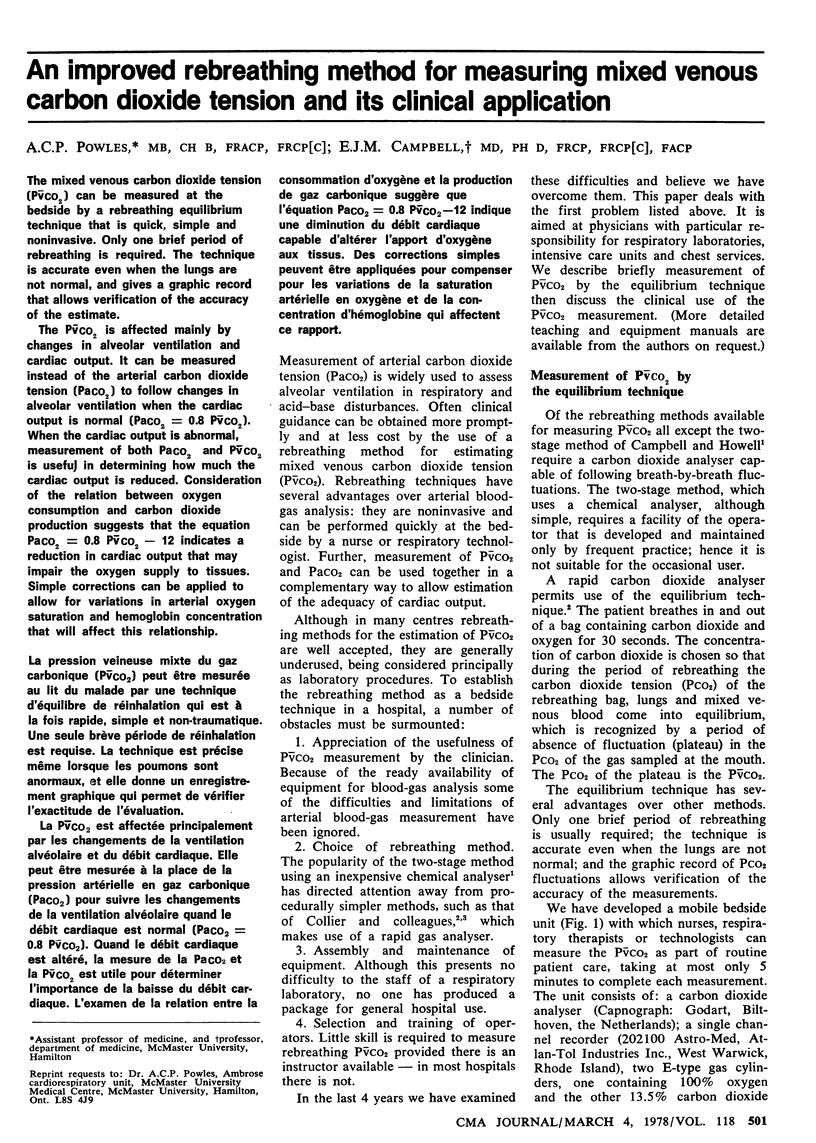
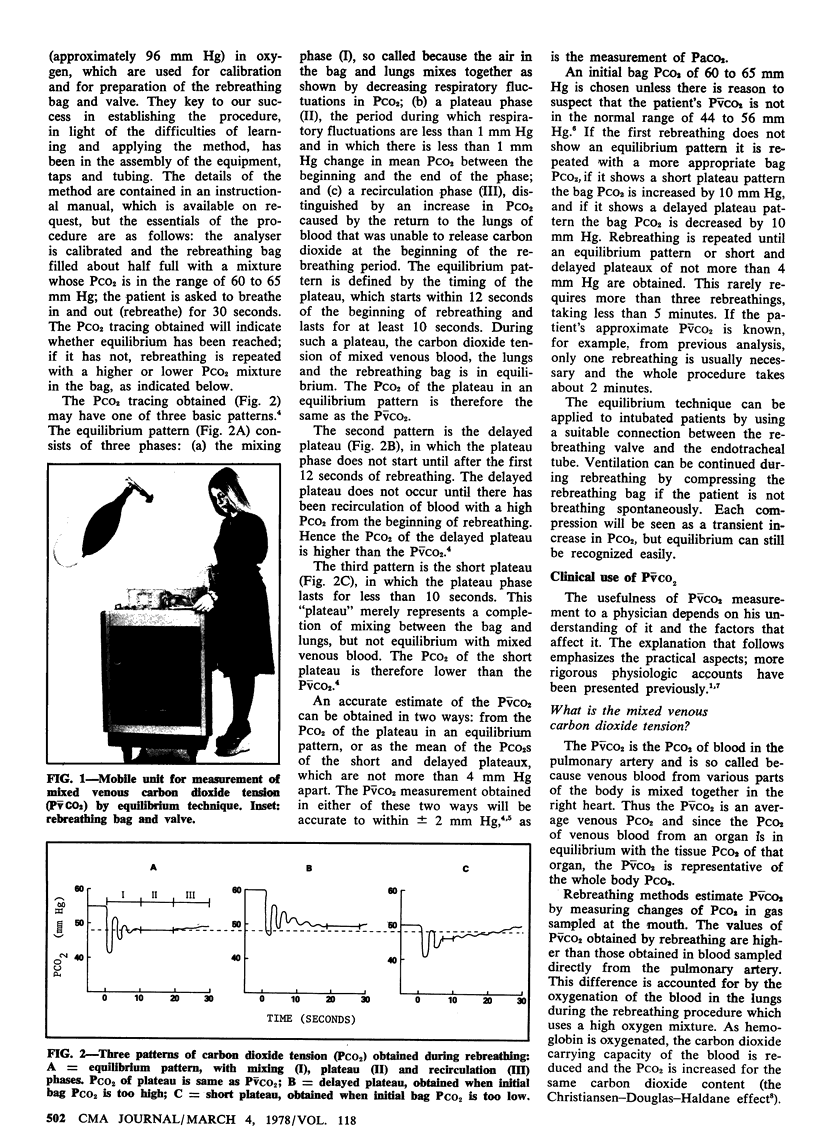
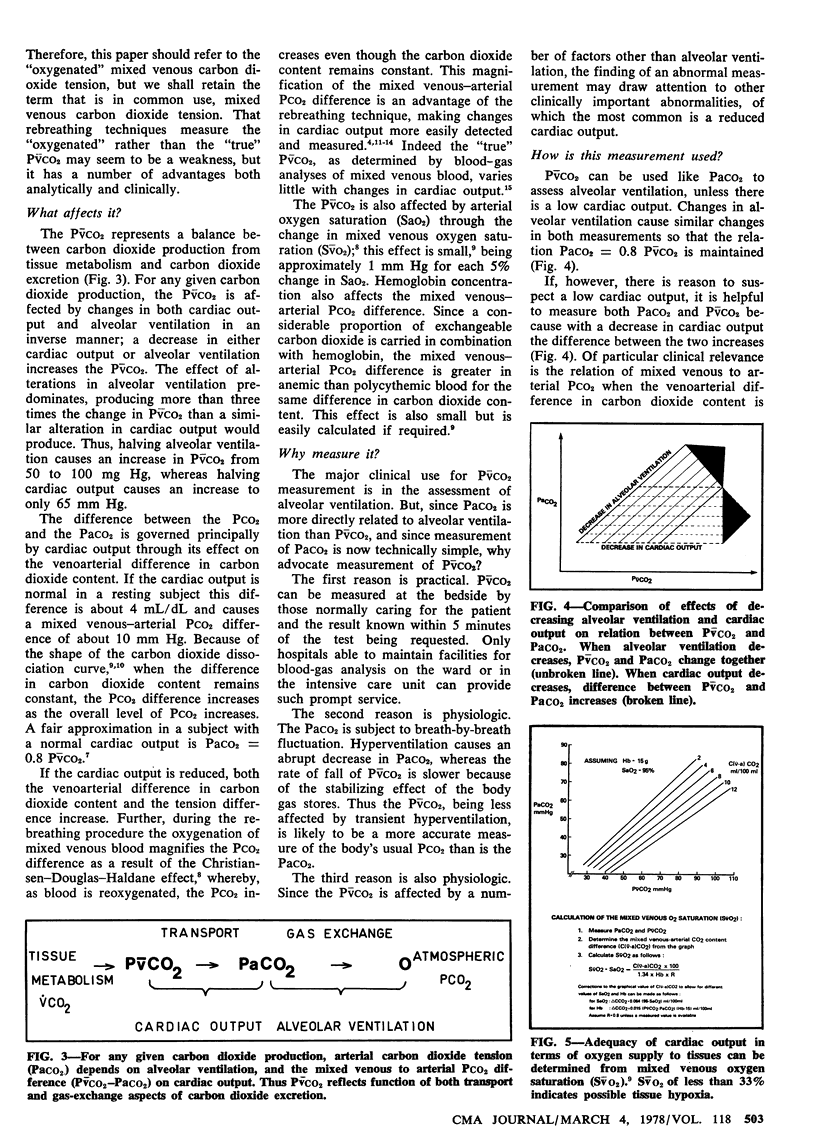
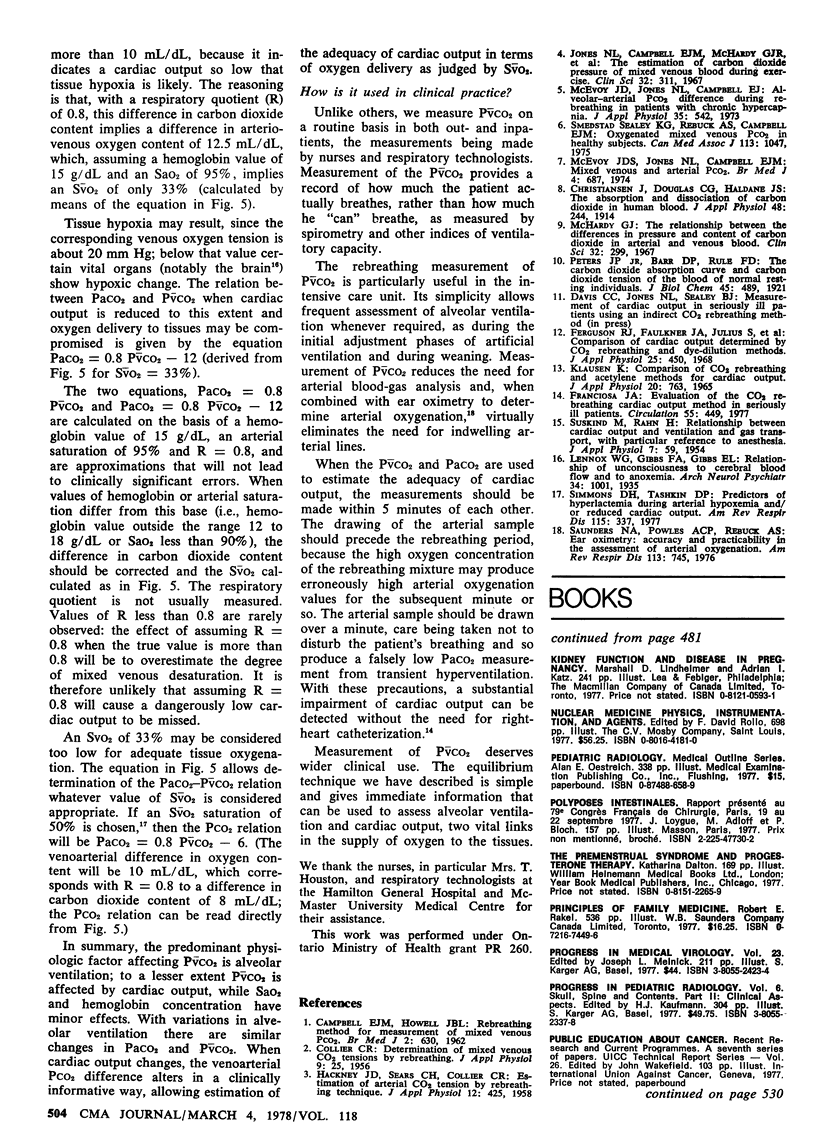
Images in this article
Selected References
These references are in PubMed. This may not be the complete list of references from this article.
- CAMPBELL E. J., HOWELL J. B. Rebreathing method for measurement of mixed venous PCO2. Br Med J. 1962 Sep 8;2(5305):630–633. doi: 10.1136/bmj.2.5305.630. [DOI] [PMC free article] [PubMed] [Google Scholar]
- Christiansen J., Douglas C. G., Haldane J. S. The absorption and dissociation of carbon dioxide by human blood. J Physiol. 1914 Jul 14;48(4):244–271. doi: 10.1113/jphysiol.1914.sp001659. [DOI] [PMC free article] [PubMed] [Google Scholar]
- Franciosa J. A. Evaluation of the CO2 rebreathing cardiac output method in seriously ill patients. Circulation. 1977 Mar;55(3):449–455. doi: 10.1161/01.cir.55.3.449. [DOI] [PubMed] [Google Scholar]
- HACKNEY J. D., SEARS C. H., COLLIER C. R. Estimation of arterial CO2 tension by rebreathing technique. J Appl Physiol. 1958 May;12(3):425–430. doi: 10.1152/jappl.1958.12.3.425. [DOI] [PubMed] [Google Scholar]
- Jones N. L., Campbell E. J., McHardy G. J., Higgs B. E., Clode M. The estimation of carbon dioxide pressure of mixed venous blood during exercise. Clin Sci. 1967 Apr;32(2):311–327. [PubMed] [Google Scholar]
- Klausen K. Comparison of CO2 rebreathing and acetylene methods for cardiac output. J Appl Physiol. 1965 Jul;20(4):763–766. doi: 10.1152/jappl.1965.20.4.763. [DOI] [PubMed] [Google Scholar]
- McEvoy J. D., Jones N. L., Campbell E. J. Alveolar-arterial PCO2 difference during rebreathing in patients with chronic hypercapnia. J Appl Physiol. 1973 Oct;35(4):542–545. doi: 10.1152/jappl.1973.35.4.542. [DOI] [PubMed] [Google Scholar]
- McEvoy J. D., Jones N. L., Campbell E. J. Mixed venous and arterial Pco2. Br Med J. 1974 Dec 21;4(5946):687–690. doi: 10.1136/bmj.4.5946.687. [DOI] [PMC free article] [PubMed] [Google Scholar]
- McHardy G. J. The relationship between the differences in pressure and content of carbon dioxide in arterial and venous blood. Clin Sci. 1967 Apr;32(2):299–309. [PubMed] [Google Scholar]
- SUSKIND M., RAHN H. Relationship between cardiac output and ventilation and gas transport, with particular reference to anesthesia. J Appl Physiol. 1954 Jul;7(1):59–65. doi: 10.1152/jappl.1954.7.1.59. [DOI] [PubMed] [Google Scholar]
- Saunders N. A., Powles A. C., Rebuck A. S. Ear oximetry: accuracy and practicability in the assessment of arterial oxygenation. Am Rev Respir Dis. 1976 Jun;113(6):745–749. doi: 10.1164/arrd.1976.113.6.745. [DOI] [PubMed] [Google Scholar]
- Sealey K. G., Rubuck A. S., Campbell E. J. Oxygenated mixed venous PCO2 in healthy subjects. Can Med Assoc J. 1975 Dec 13;113(11-12):1047–1050. [PMC free article] [PubMed] [Google Scholar]



